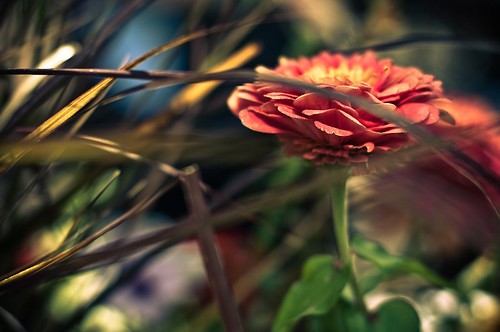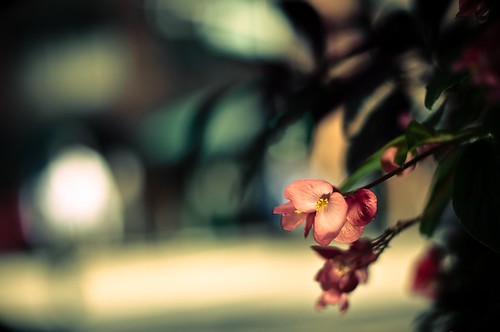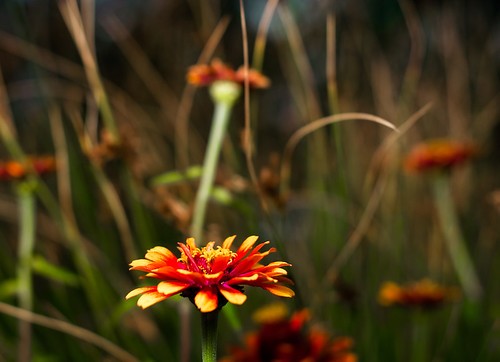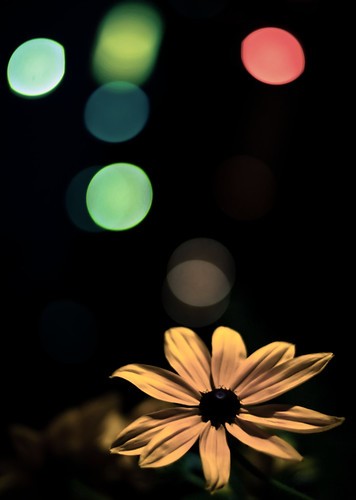You are using an out of date browser. It may not display this or other websites correctly.
You should upgrade or use an alternative browser.
You should upgrade or use an alternative browser.
Gary Fong diffuser during the day
- Thread Starter DScience
- Start date
- Joined
- Dec 16, 2003
- Messages
- 33,896
- Reaction score
- 1,853
- Location
- Edmonton
- Can others edit my Photos
- Photos NOT OK to edit
- Moderator 🛠️
- #19
Only when there are surfaces surrounding you, for the light to bounce off of. If there are no bounce surfaces and the light is only getting to the subject directly from the light source, any added softness is marginal because it's only slightly bigger than a bare flash head...and size & proximity are the only ways to make light softer.The GF diffuser is a great way to create soft light from a flash.
With that out of the way...I don't care how you are using your light, if you can get great results like this, then do what you want.
inTempus
TPF Noob!
- Joined
- Dec 15, 2008
- Messages
- 3,692
- Reaction score
- 4
- Location
- Indiana
- Can others edit my Photos
- Photos OK to edit
I was going to mention what Mike said, but I was thinking it was obvious to a GF user. Without walls and a ceiling, the GF defuser doesn't really do much for you in terms of casting light. The GF relies heavily on having walls in relatively close proximity to the subject. Without them you're getting very little light from your flash to your subject as the defuser blasts the light in a 360 degree circle around you, and straight up.
musicaleCA
TPF Noob!
- Joined
- May 23, 2009
- Messages
- 2,303
- Reaction score
- 0
- Location
- Vancouver, BC
- Can others edit my Photos
- Photos OK to edit
Why use a GF diffuser in broad daylight? For this kind of lighting, a small softbox or beauty dish would do just as well, and likely get faster recycle times and far more life from your batteries in the process. The GF will be throwing light all over, and it'll just get lost on the sides.
Do you know what a GF diffuser is?
I would sure hope a softbox or beauty dish would do better. All I am using is a small flash, with a cheap diffuser and firing it off camera. I am using it to take pics of people on the street. Now, how complicated would it be to set up a softbox or beauty dish to get a quick snap of some street performer?
The GF diffuser is a great way to create soft light from a flash.
No need to be snide. It was an honest question. I will take your first question for an honest inquiry of whether or not I know what a Gary Fong Lightsphere is and not an underhanded attempt to be stand-offish, and answer candidly: Yes, I do know what a GF diffuser is. If I did not, I wouldn't comment on it.
When using a small flash, using a GF diffuser compounds one of the greatest limitations of these small devices: power output. By bouncing light everywhere, in a bare-bulb-like style, you lose a lot of power when there is nothing for that light to bounce off of (that and you lose all direction to the light when you're indoors, but that's another matter entirely). As for the diffuser being cheap, that's simply not true, unless you know someone I don't. GF diffusers are expensive by any measure.
I believe you erroneously thought that I was speaking of rather large softboxes. As I did say "small softbox", I am miffed that you would come to such a conclusion. I was referring to softboxes like the LumiQuest Softbox III, or this DIY beauty dish. Both would simply be a case of strapping it to the flash and going about your business.
DScience
No longer a newbie, moving up!
- Joined
- Apr 12, 2009
- Messages
- 1,513
- Reaction score
- 122
- Location
- Denver, CO
- Can others edit my Photos
- Photos NOT OK to edit
- Thread Starter 🔹
- #22
Only when there are surfaces surrounding you, for the light to bounce off of. If there are no bounce surfaces and the light is only getting to the subject directly from the light source, any added softness is marginal because it's only slightly bigger than a bare flash head...and size & proximity are the only ways to make light softer.The GF diffuser is a great way to create soft light from a flash.
With that out of the way...I don't care how you are using your light, if you can get great results like this, then do what you want.
I was going to mention what Mike said, but I was thinking it was obvious to a GF user. Without walls and a ceiling, the GF defuser doesn't really do much for you in terms of casting light. The GF relies heavily on having walls in relatively close proximity to the subject. Without them you're getting very little light from your flash to your subject as the defuser blasts the light in a 360 degree circle around you, and straight up.
Well first off I am not trying to start an argument, because I am well aware that I am a beginner and the three who this is in response to know way more than I for sure. However there are the key points to keep in mind: 1) I have a completely different intent with photography than the professional; 2) I came too all these conclusions from pure experience and nothing else. Thus I use the GF diffuser for what I am interested in shooting, because it does the best job for the equipment I currently have at the moment.
Now I would like to give a little explanation for my argument, and I have pics. :mrgreen:
First let me explain briefly what I first started with. I tried many different homemade diffusers from opaque shopping bags to other random things around the house. The thing I found that worked best was actually the piece of foam that goes around your lens in a brand new box; because it's round and the top is enclosed it worked well. I tried the diffuser from a store which is just the small plastic thing that slides over your flash (sb-600) which is made for almost all brands. Like this: http://images.smarter.com/300x300x15/6/04/57604.jpg
Then I got the GF, and one reason is so I could take pics of flowers at night with bokeh in the background. I tried it with a bare flash and it was HORRIBLE. When I first tested the GF once I got it, here is the experiment I did. I simply went into a dark room in my basement and took pics with the flash. I did it tonight just to show how the GF really does make a diff.
1. Bare flash: Exposure: 0.001 sec (1/2000) Aperture: f/1.4 Focal Length: 50 mm Exposure: 0.00 ISO Speed: 200

2. Bounced flash off wall to the left of subject:
Exposure: 1/3200 sec Aperture: f/1.4 Focal Length: 50 mm Exposure: 0.00 ISO Speed: 200

3. W/ GF diffuser aimed straight at the subject:
Exposure: 0.001 sec (1/1250) Aperture: f/1.4 Focal Length: 50 mm Exposure: 0.00 ISO Speed: 200

Here is another set that is even more convincing, in same order if you want exif i'll add.
***Now I know that you could improve each shot, and even the GF shot is underexposed. But the point I'm trying to show is how the GF really does change the character of light you can obtain, and I personally think in some cases it's better than a bare light.***
4.) Bare flash:

5.) w/ GF same exact settings:

Now here are what I really use it for. These were all taken using the GF diffuser and my purpose was to get a better exposure of background and surrounding parts of the photos.




Plato
TPF Noob!
- Joined
- Jul 11, 2009
- Messages
- 1,058
- Reaction score
- 1
- Location
- United States of America
- Can others edit my Photos
- Photos NOT OK to edit
i like the lighting in these.. framing 'im not sure... seems off to me...
they are really cool though... are these random people you just asked to take a photo of?...
how do you get the images to look so... gritty?... not sure how to describe it... but that feel i really like... is it in post processing?
The problem with the framing in #1 is that he's looking toward the "small" side. He should be on the other side of the frame OR should be looking in the opposite direction.
DScience
No longer a newbie, moving up!
- Joined
- Apr 12, 2009
- Messages
- 1,513
- Reaction score
- 122
- Location
- Denver, CO
- Can others edit my Photos
- Photos NOT OK to edit
- Thread Starter 🔹
- #24
Why use a GF diffuser in broad daylight? For this kind of lighting, a small softbox or beauty dish would do just as well, and likely get faster recycle times and far more life from your batteries in the process. The GF will be throwing light all over, and it'll just get lost on the sides.
Do you know what a GF diffuser is?
I would sure hope a softbox or beauty dish would do better. All I am using is a small flash, with a cheap diffuser and firing it off camera. I am using it to take pics of people on the street. Now, how complicated would it be to set up a softbox or beauty dish to get a quick snap of some street performer?
The GF diffuser is a great way to create soft light from a flash.
No need to be snide. It was an honest question. I will take your first question for an honest inquiry of whether or not I know what a Gary Fong Lightsphere is and not an underhanded attempt to be stand-offish, and answer candidly: Yes, I do know what a GF diffuser is. If I did not, I wouldn't comment on it.
When using a small flash, using a GF diffuser compounds one of the greatest limitations of these small devices: power output. By bouncing light everywhere, in a bare-bulb-like style, you lose a lot of power when there is nothing for that light to bounce off of (that and you lose all direction to the light when you're indoors, but that's another matter entirely). As for the diffuser being cheap, that's simply not true, unless you know someone I don't. GF diffusers are expensive by any measure.
I believe you erroneously thought that I was speaking of rather large softboxes. As I did say "small softbox", I am miffed that you would come to such a conclusion. I was referring to softboxes like the LumiQuest Softbox III, or this DIY beauty dish. Both would simply be a case of strapping it to the flash and going about your business.
I apologize, I was a little snide. I guess I figured if someone knew what a GF diffuser was, it would be obvious as to why I would use it over something like a beauty dish or even a small softbox (which I am well aware exist).
To further explain why I use it let me give an example. I go shoot downtown in the city frequently and I like to have just one small bag. I can fit my camera with my 50mm on it, plus my sb-600 and the GF hangs on the side. It's easy to whip out if I want to get some different lighting options. I agree that a softbox and beauty dish can get you better use of the flash, but now all I have is the GF.
inTempus
TPF Noob!
- Joined
- Dec 15, 2008
- Messages
- 3,692
- Reaction score
- 4
- Location
- Indiana
- Can others edit my Photos
- Photos OK to edit
Interesting experiment Dscience. I like the examples you've given. I assume you're leaving the flash pointing straight upwards with the GF attached or do you position it some other way?
DScience
No longer a newbie, moving up!
- Joined
- Apr 12, 2009
- Messages
- 1,513
- Reaction score
- 122
- Location
- Denver, CO
- Can others edit my Photos
- Photos NOT OK to edit
- Thread Starter 🔹
- #26
Interesting experiment Dscience. I like the examples you've given. I assume you're leaving the flash pointing straight upwards with the GF attached or do you position it some other way?
I've tried different variations, and I have found that pointing it straight up is best when used as a fill flash for a larger area (ie a room). However when I am focusing on a single object, and am pretty close to subject, I will sometimes point it directly forward, with the flash head down all the way. Now that you mention this, I think I am going to try with some different angles to see the effects.
All my examples, including the fun ones, were taken with it pointed directly at the subject, not up.
musicaleCA
TPF Noob!
- Joined
- May 23, 2009
- Messages
- 2,303
- Reaction score
- 0
- Location
- Vancouver, BC
- Can others edit my Photos
- Photos OK to edit
Fair enough (that for now you only have the GF), though in terms of quick set-up and take-down, I think you'll find a Softbox III or the like to be quite similar, and you'll use less flash power in the process (and actually get a larger effective size than the GF to boot), which can be an important consideration in daylight. I had to do a profile recently, outside, at 2PM, on a crystal clear day. The light was so bright and harsh I had to desperately over-power the sun with my 580. Didn't work, at full power. I suspect that had I been able to trigger all three of my flashes, bare, I could've managed it without blowing the sky (I lost my bloody Cactus V4 transmitter. Grrr).
inTempus
TPF Noob!
- Joined
- Dec 15, 2008
- Messages
- 3,692
- Reaction score
- 4
- Location
- Indiana
- Can others edit my Photos
- Photos OK to edit
Interesting.Interesting experiment Dscience. I like the examples you've given. I assume you're leaving the flash pointing straight upwards with the GF attached or do you position it some other way?
I've tried different variations, and I have found that pointing it straight up is best when used as a fill flash for a larger area (ie a room). However when I am focusing on a single object, and am pretty close to subject, I will sometimes point it directly forward, with the flash head down all the way. Now that you mention this, I think I am going to try with some different angles to see the effects.
All my examples, including the fun ones, were taken with it pointed directly at the subject, not up.
Do you have the top dome on the GF, or do you not have it on there and just have it open?
DScience
No longer a newbie, moving up!
- Joined
- Apr 12, 2009
- Messages
- 1,513
- Reaction score
- 122
- Location
- Denver, CO
- Can others edit my Photos
- Photos NOT OK to edit
- Thread Starter 🔹
- #29
Interesting.Interesting experiment Dscience. I like the examples you've given. I assume you're leaving the flash pointing straight upwards with the GF attached or do you position it some other way?
I've tried different variations, and I have found that pointing it straight up is best when used as a fill flash for a larger area (ie a room). However when I am focusing on a single object, and am pretty close to subject, I will sometimes point it directly forward, with the flash head down all the way. Now that you mention this, I think I am going to try with some different angles to see the effects.
All my examples, including the fun ones, were taken with it pointed directly at the subject, not up.
Do you have the top dome on the GF, or do you not have it on there and just have it open?
I keep the top dome on all the time.
inTempus
TPF Noob!
- Joined
- Dec 15, 2008
- Messages
- 3,692
- Reaction score
- 4
- Location
- Indiana
- Can others edit my Photos
- Photos OK to edit
Ok.Interesting.I've tried different variations, and I have found that pointing it straight up is best when used as a fill flash for a larger area (ie a room). However when I am focusing on a single object, and am pretty close to subject, I will sometimes point it directly forward, with the flash head down all the way. Now that you mention this, I think I am going to try with some different angles to see the effects.
All my examples, including the fun ones, were taken with it pointed directly at the subject, not up.
Do you have the top dome on the GF, or do you not have it on there and just have it open?
I keep the top dome on all the time.
If you're outside and don't have walls around... and you're pointing the GF directly at the subject with the dome on... then I imagine the results would be about the same as using a $10 StoFen defuser. The surface area is a little larger on the GF's dome (which if you're outside is the only thing firing light at your subject).
I have both products, I'll have to do some tests from a tripod - side by side - to see what the results are.
Similar threads
- Replies
- 9
- Views
- 875












